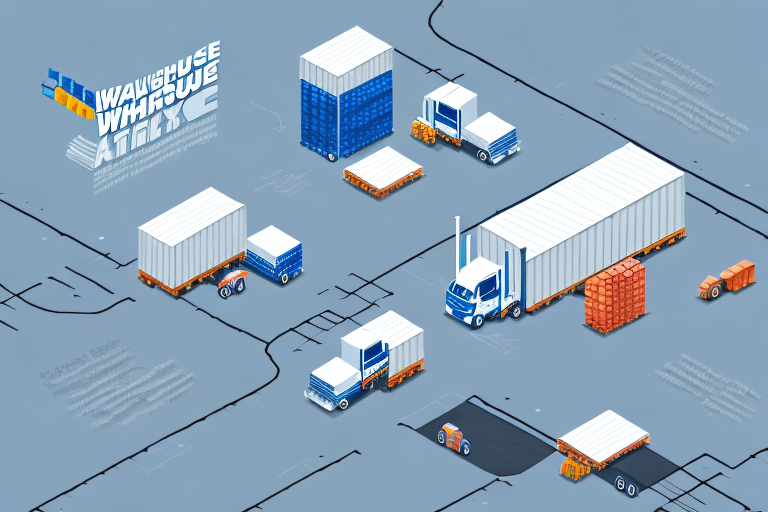What is 3PL Integration?
Third-Party Logistics (3PL) integration involves incorporating a specialized logistics provider into your business operations. By partnering with a 3PL, companies can outsource critical aspects of their supply chain, such as warehousing, transportation, and inventory management, allowing them to focus on their core competencies.
Integration methods include Electronic Data Interchange (EDI), Application Programming Interfaces (API), and web portals, ensuring seamless communication and data exchange between your business and the 3PL provider. This collaboration enhances efficiency, scalability, and overall supply chain performance.
Benefits of 3PL Integration for Small Businesses
Cost Savings
Outsourcing logistics to a 3PL provider can significantly reduce overhead costs. 3PLs leverage economies of scale to negotiate better rates for shipping, warehousing, and other services, passing the savings on to their clients.
Market Expansion
3PL providers possess extensive knowledge of regional and international markets. This expertise enables small businesses to expand their reach and enter new markets with reduced risk and increased efficiency.
Access to Advanced Technology
3PLs often utilize cutting-edge technologies for inventory tracking, order management, and supply chain analytics. Small businesses can benefit from these advanced tools without the need for substantial capital investment.
According to a Forbes report, businesses using 3PL services can reduce operational costs by up to 20%.
Selecting the Right 3PL Provider
Assessing Experience and Reputation
Choose a 3PL with a proven track record and positive client testimonials. Experienced providers are better equipped to handle complex logistics challenges and adapt to your business needs.
Geographic Coverage
Evaluate the 3PL’s network to ensure they can support your current and future market locations. A provider with a robust international presence is essential for global expansion.
Technology and Integration Capabilities
Ensure the 3PL offers advanced technology solutions and can seamlessly integrate with your existing systems through APIs or other integration methods.
Pricing and Value
While cost is a significant factor, it should not be the sole consideration. Assess the overall value, including service quality, technology, and scalability, to make an informed decision.
Implementing 3PL Integration: Key Considerations
Infrastructure and Technology Readiness
Ensure your business has the necessary infrastructure and technology to support 3PL integration. This may involve upgrading systems, adopting new software, or training staff.
Clear Communication Channels
Establish transparent communication protocols with your 3PL provider. Define roles, responsibilities, and set up regular meetings to monitor progress and address any issues promptly.
Industry Expertise
Choose a 3PL provider that understands your industry’s unique challenges and requirements. Specialized knowledge ensures tailored solutions that align with your business goals.
Performance Metrics and KPIs
Define and agree upon key performance indicators (KPIs) to measure the success of the integration. Common metrics include order fulfillment rates, delivery times, and inventory accuracy.
Measuring Success: Key Metrics in 3PL Integration
Inventory Accuracy
Track the accuracy of inventory levels managed by the 3PL to minimize stockouts and overstock situations.
Order Fulfillment Rates
Monitor the percentage of orders processed and delivered on time to ensure customer satisfaction.
On-Time Delivery Performance
Measure the timeliness of deliveries to gauge the efficiency of the logistics operations.
Customer Satisfaction
Use surveys and feedback tools to assess how the integration impacts customer experience and satisfaction.
Regularly reviewing these metrics helps in identifying areas for improvement and ensuring that the 3PL integration delivers the desired outcomes.
Overcoming Challenges in 3PL Integration
Data Integration Issues
Data consistency and accuracy are critical. Invest in robust data management tools and establish clear protocols to ensure seamless data transfer between systems.
Cultural and Communication Barriers
Cultural differences and communication gaps can hinder effective collaboration. Provide cross-cultural training and maintain open, regular communication channels to bridge these gaps.
Process Coordination
Aligning internal processes with the 3PL’s operations requires meticulous planning. Develop a comprehensive project management plan that outlines each party’s responsibilities and timelines.
Resistance to Change
Employees may resist changes brought by 3PL integration. Engage your team through training and involve them in the integration process to foster acceptance and smooth the transition.
Future Trends in 3PL Integration
Increased Automation
Automation technologies, such as robotics and automated warehouses, are becoming integral to 3PL operations, enhancing speed and accuracy.
Predictive Analytics
Leveraging big data and machine learning, 3PLs are moving towards predictive analytics to forecast demand, optimize inventory, and improve decision-making.
Blockchain Technology
Blockchain offers enhanced transparency and security in the supply chain, enabling tamper-proof tracking of goods and streamlined transactions.
Sustainability Initiatives
Environmental sustainability is gaining prominence. 3PL providers are adopting green logistics practices to reduce carbon footprints and promote eco-friendly operations.
Staying informed about these trends ensures that your business remains competitive and leverages the latest advancements in 3PL integration.
Conclusion
Integrating with a 3PL provider offers numerous benefits, including cost savings, enhanced efficiency, improved customer service, and streamlined supply chain operations. By carefully selecting the right 3PL partner, addressing key integration considerations, and monitoring critical metrics, businesses can maximize the advantages of 3PL integration. Embracing future trends will further empower your business to stay ahead in the competitive landscape.




















